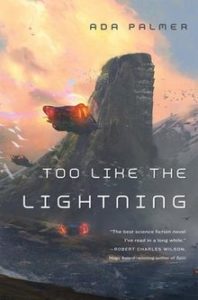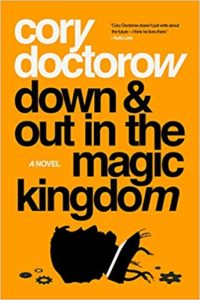One of the hard problems of writing far-future science fiction is just how strange humans of that era are likely to appear to present-day readers. Quite apart from the changes that technology and any move of setting from the terrestrial are likely to bring, the ways that societies change over time are likely to render humans of a time centuries hence nearly as alien as any actual aliens that appear in the stories. They won’t be unrecognizable — going in the other direction, readers still recognize people in, say, Dante, Homer and the epic of Gilgamesh — but they will be strange in ways both big and small, and things that are perfectly ordinary in a far future will be very difficult to comprehend to outsiders visiting from somewhen else.
Most of the time, authors ignore this problem for the sake of getting on with the stories they want to tell. Or they may rationalize their writing as something like an implicit translation from the idioms and manners of then into the usages of today. “Of course people in the twenty-sixth century won’t say ‘Perfectly cromulent,’ but they will have a functionally equivalent expression, and anyway I am writing for a contemporary audience so I use dialogue that is pleasing to present-day sensibilities.” There is also the point about the inevitability of authors writing as people of their time, with many of the assumptions and commonplaces of the era. It has been famously noted that Isaac Asimov, for example, could imagine a robot doing a man’s job, but not a woman doing the same.
In Too Like the Lightning, Ada Palmer tackles this problem directly. “You will criticize me, reader, for writing in a style six hundred years removed from the events I describe, but you came to me for explanation of those days of transformation which left your world the world it is, and since it was the philosophy of the Eighteenth Century, heavy with optimism and ambition, whose abrupt revival birthed the recent revolution, so it is only in the language of the Enlightenment, rich with opinion and sentiment, that those days can be described. … It will be hard at first, but whether you are my contemporary still awed by the new order, or an historian gazing back at my Twenty-Fifth Century as remotely as I gaze back on the Eighteenth, you will find yourself more fluent in the language of the past than you imagined; we all are.” (p. 7) Fluent, too, in the language of the future. They care about things that strike us as unimportant, their daily interactions involve many of the same things, but are different in countless small ways that add up to a new society. Their motivations look odd, as of someone from a different culture, because of course that is exactly what they are.





